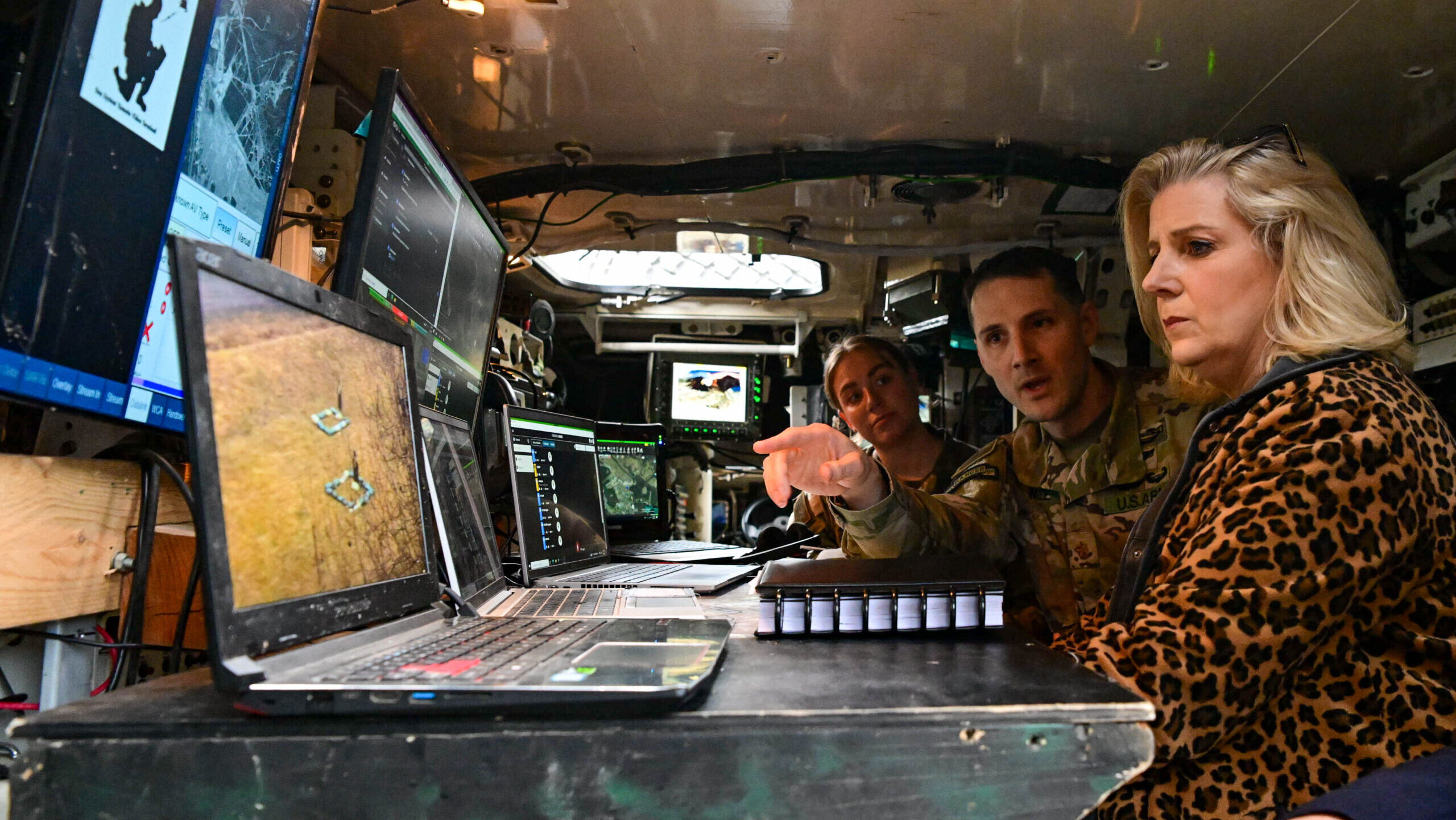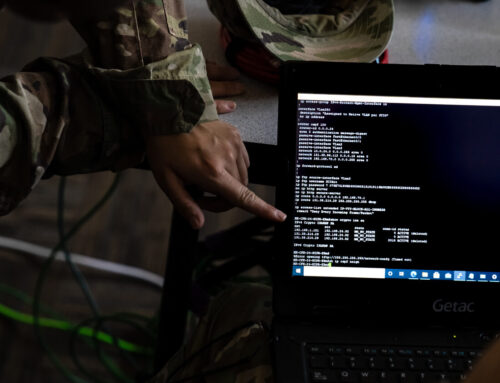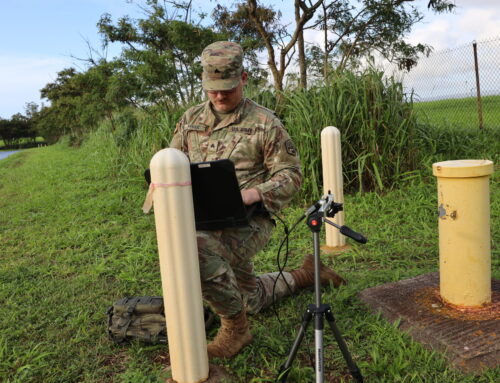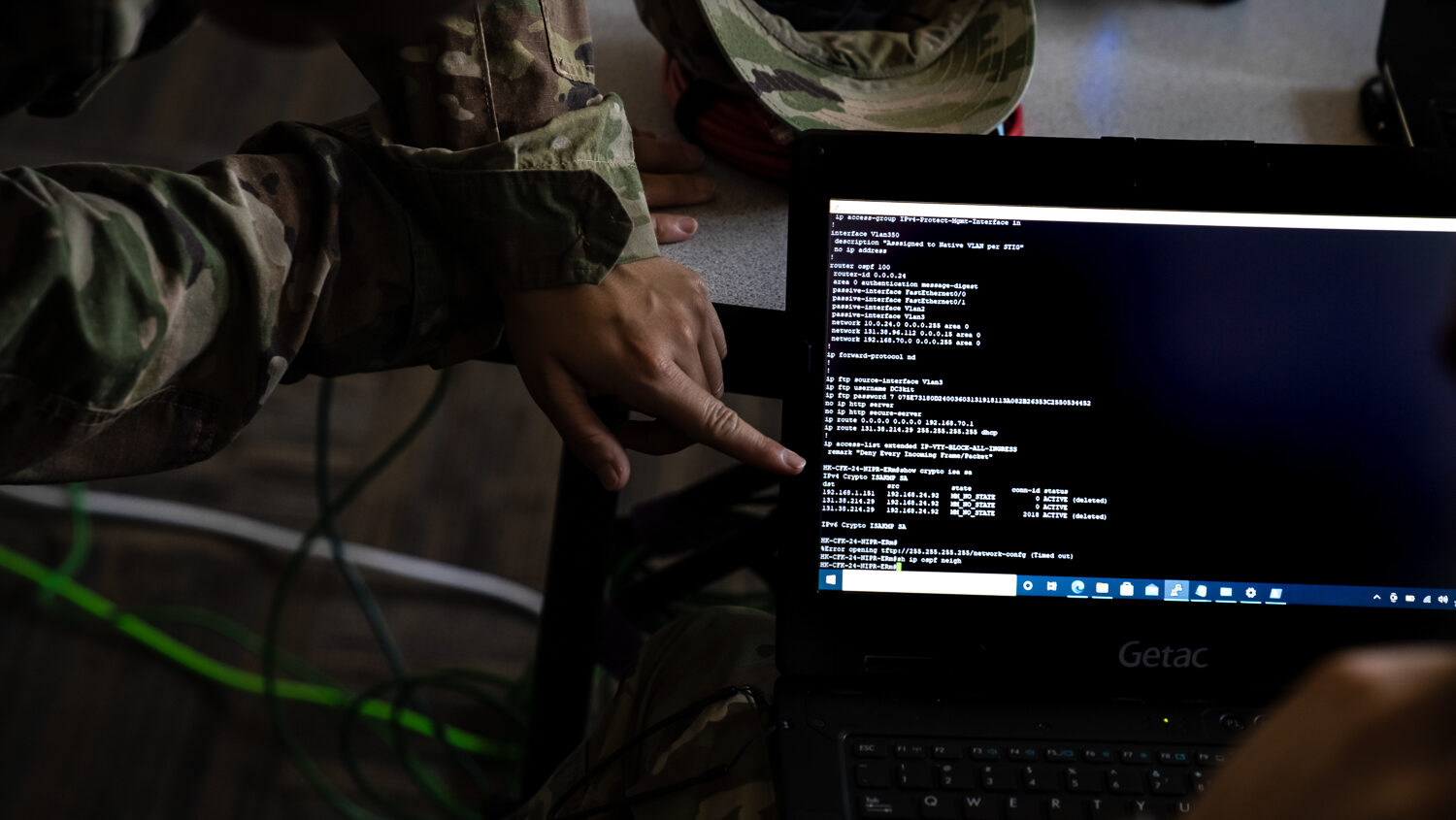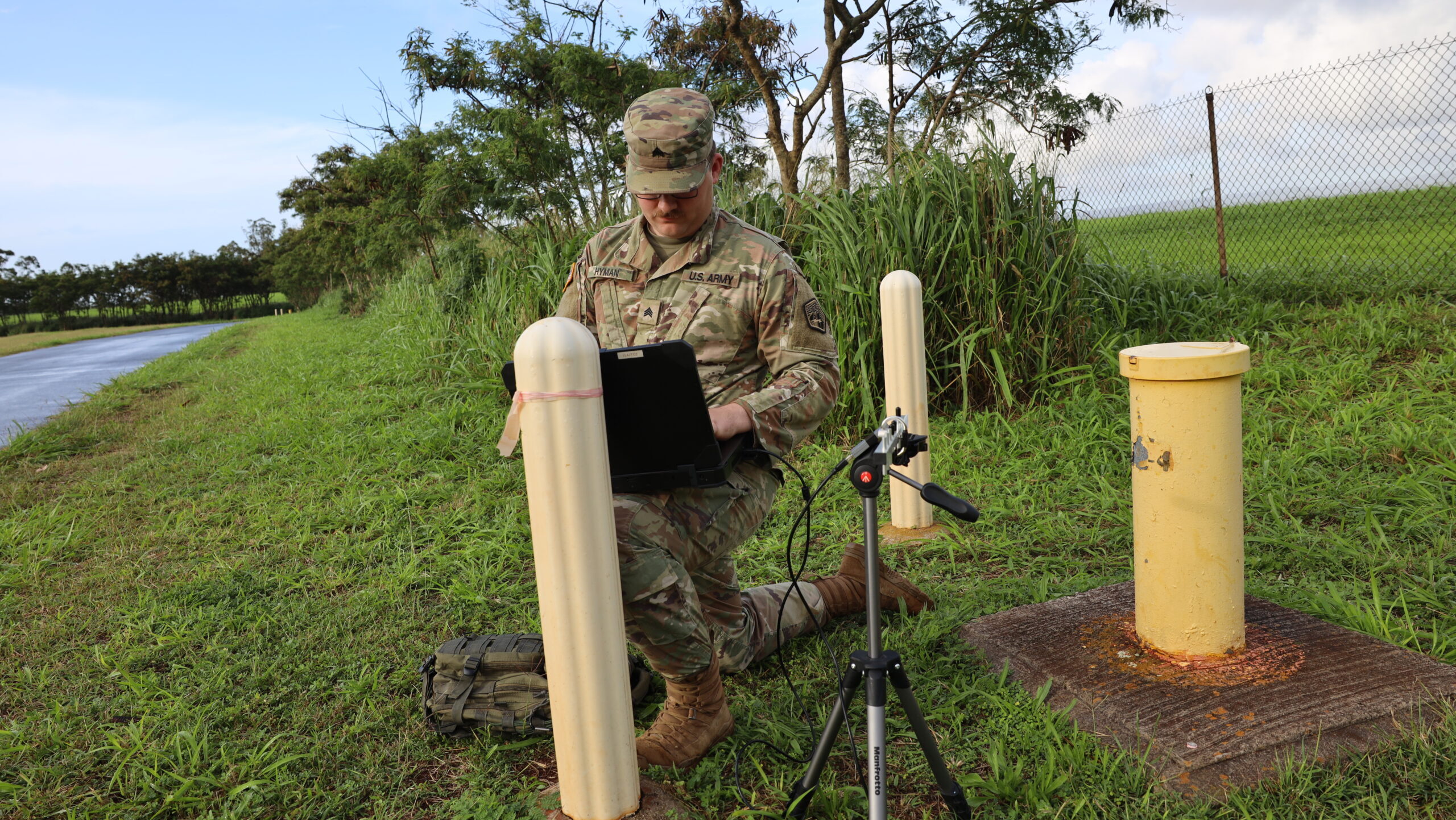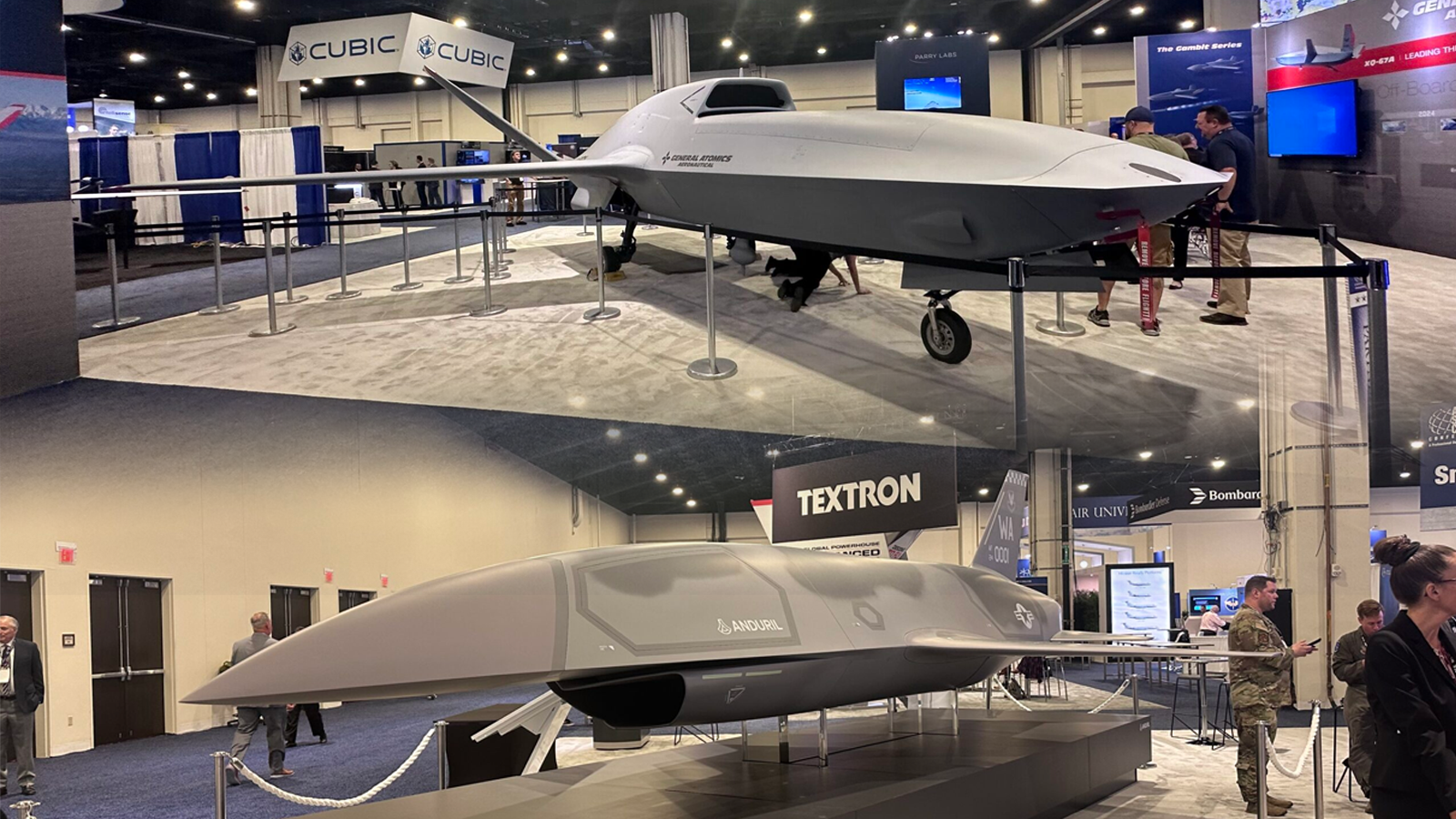Secretary of the Army Christine Wormuth observes soldier training in Grafenwoehr, Germany, on February 15, 2024. (US Army/Sgt. David Resnick)
AUSA 2024 — As US Army leaders continue inking plans to request flexible spending pots for several broad groups of technology, the service’s top two civilian leaders say that they are growing more optimistic about their chances of getting such a request across the line.
The Army’s plan, at least right now, is to use the upcoming fiscal 2026 budget request to test the waters on a proposal to bundle dollars in three distinct categories — unmanned aerial systems, counter-unmanned aerial systems and electronic warfare — instead of requesting funds for specific systems. By doing this, service leaders say that they will be better able to keep up with the pace of changing technology and quickly pivot to what works.
“One of the challenges we face, of course, is that we live in a two-year forward-looking appropriation cycle, so it’s very difficult to predict what technology might be available two years from now,” Army Undersecretary Gabe Camarillo told Breaking Defense in late September.
“One of the things we’re doing with this budget cycle is to see if we can craft our budget … to give us enough flexibility to conduct competitions, and to be able to buy different types of systems against those threats, as opposed to before where we were listing systems by name,” he later added.
Just what that looks like, though, is still a work in progress. For example, under that C-UAS umbrella there could be some broad groupings that divvy up buys for kinetic interceptors, high-powered microwaves and high-energy lasers.
“We’re looking at that right now,” Camarillo said.
In an interview with Breaking Defense on Wednesday, Army Secretary Christine Wormuth said a key part of those “active conversations” includes House and Senate appropriators to determine just what route they are most receptive towards. Part of the challenge there centers on lawmakers’ reluctance to provide slush funds they can’t control. And while there is no guarantee that Army leaders and appropriators strike a deal, Wormuth said she is “cautiously optimistic,” which wasn’t the case nine months ago.
On the floor of this week’s Association of the US Army conference, some industry executives expressed broad support for the Army plan — with a few caveats.
“I get what the Army wants to do,” Tom Laliberty, Raytheon’s president of Land & Air Defense Systems, told Breaking Defense. “They’re seeing the dynamic nature of the environment, and they’re saying, this kind of single line item way of managing our money is really difficult, and it’d be better if we had things like counter-UAS as a topic.
“I can even see value to a company like Raytheon, where we can say, ‘Hey, we’ve got a really good idea. We just don’t have the money to do it.’ … And they’d say, ‘Yeah, we agree with you. Here’s the money,’” he said.
However, the current system signals demand at a “pretty precise level,” allowing prime contractors and their suppliers to make capital investments when sharp increases to production are slated to occur. Laliberty pointed to plans to increase production of its Coyote counter-drone interceptor from 40 to 100 units this year, which he said would not have happened without signaling from the Pentagon.
“Perhaps there’s something in between,” where they have the ability to flex certain procurement dollars, “but with certain guidelines,” he said.
Tim Cahill, Lockheed Martin’s executive vice president for its missiles and fire control unit, said there’s nothing in the Army’s plan that would give him “immediate concern,” at least in terms of how officials have described it so far.
“You wouldn’t try and apply that to the big munitions programs, for example, because that would put a level of uncertainty that I think would be detrimental to us continuing to drive investment, and draw the supply chain along with us. It would be almost the opposite of a multi year,” he said. “But for some of the systems that — at least [I’m] hearing talked about and discussed — to me, I think that makes a lot of sense.”


